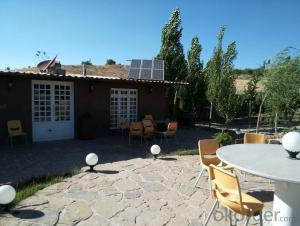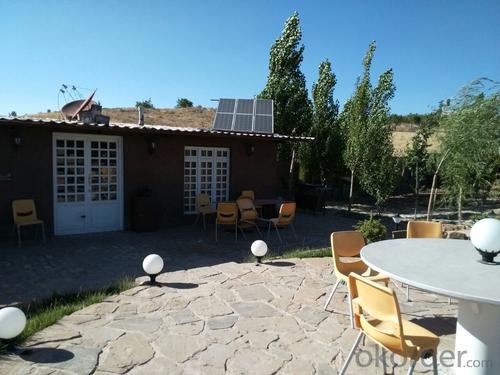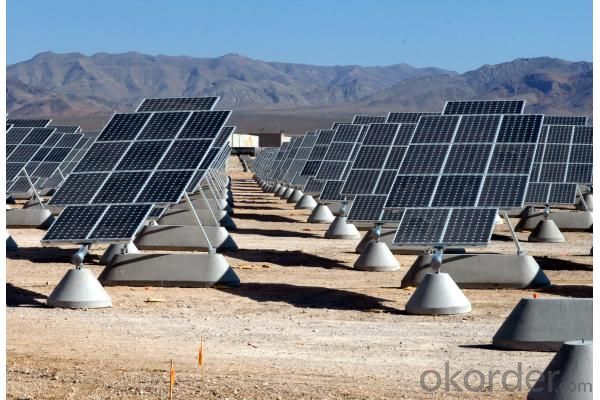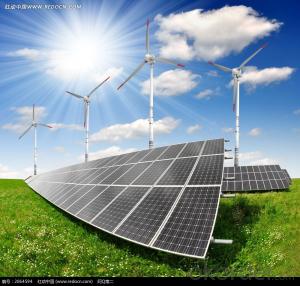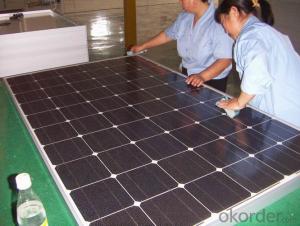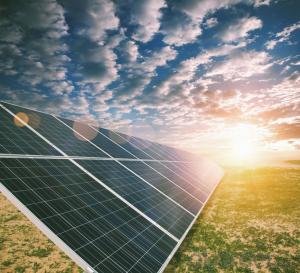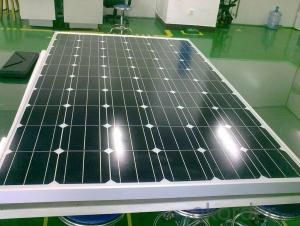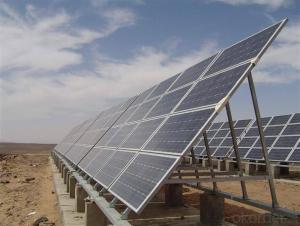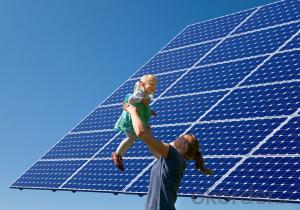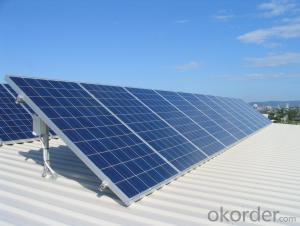Bifacial Polycrystalline Solar Panel 25W Hot Selling High Efficiency
- Loading Port:
- China main port
- Payment Terms:
- TT OR LC
- Min Order Qty:
- 250 watt
- Supply Capability:
- 200000000 watt/month
OKorder Service Pledge
OKorder Financial Service
You Might Also Like
1. Detailed Information
Type | CNBM Solar Polycrystalline Series II (25W) | ||
Materials | Silicon | ||
Size | Length | Width | Height |
650 | 290 | 18 | |
Guarantee | 12 yrs free from defects in materials and workmanship No less than 90% within 10yrs and no less than 80% within 25yrs TUV(IEC61215&IEC61730), CE, UL | ||
Application | Photovoltaic/ solar/ green energy/ energy saving | ||
Descriptions | 1.High efficiency crystalline silicon solar cell. Even if under the weak light, the solar module can produce maximum power output. 2.Tempered glass (toughened glass): Anti-reflecting coating and high transmission rate glass increase the power output and mechanical strength of solar module. 3. EVA and TPT: Using high quality EVA and TPT to prevent destroying and water. 4. AI frame: Without screw, rner connection. 6 holes on the frame can be installed easily. 5. Junction box: Multi function junction box with water proof. 6. Long lifetime: ≥25 years; Less power decrease. 7. Good performance of preventing from atrocious weather such as wind and hails. 8. Resisting moisture and etching effectively, not effected by geology. 9. The certificate issued by international authority: UL, TUV, IEC, CE.
| ||
Packaging Details: | 26pcs/pallet, 28pallets/ 40HQ Our solar panels are packed in cartons, and then pallet. Shipping by sea or by air are both ok, it up to customer’s chose. We’d like to inquiry the freight cost for customer after be informed exact quantity and destination address. | ||
2. Technology
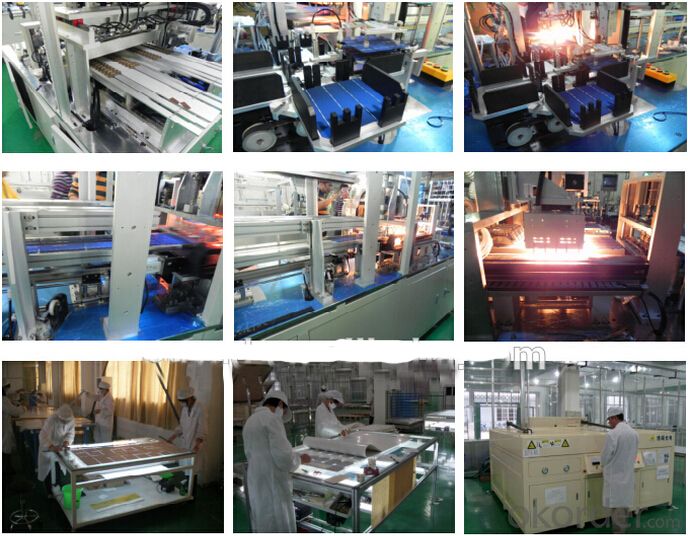
3.The picture of the products
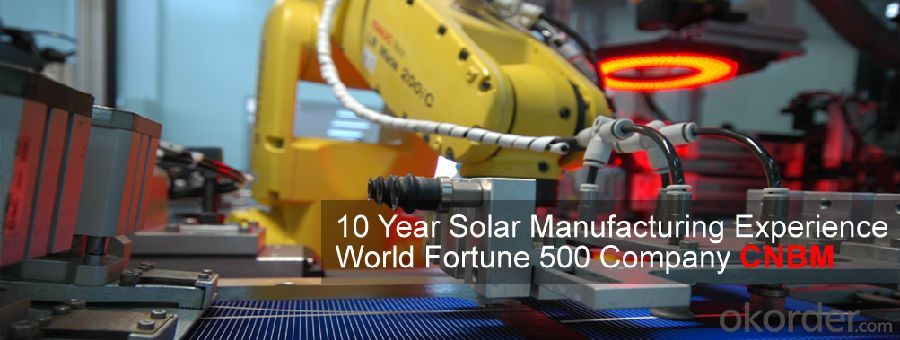
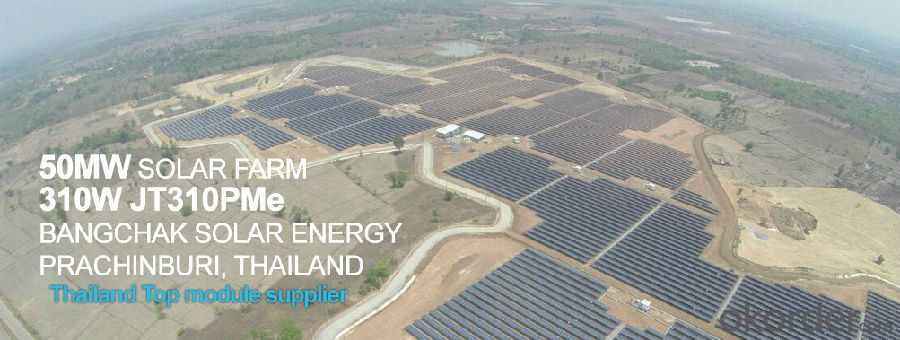
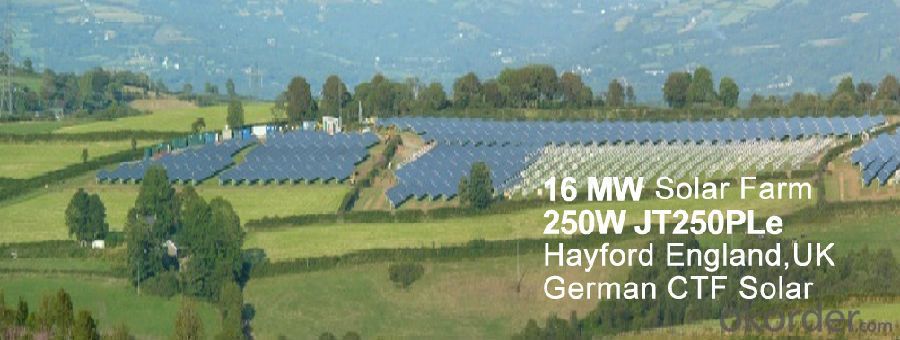
4.Packing Details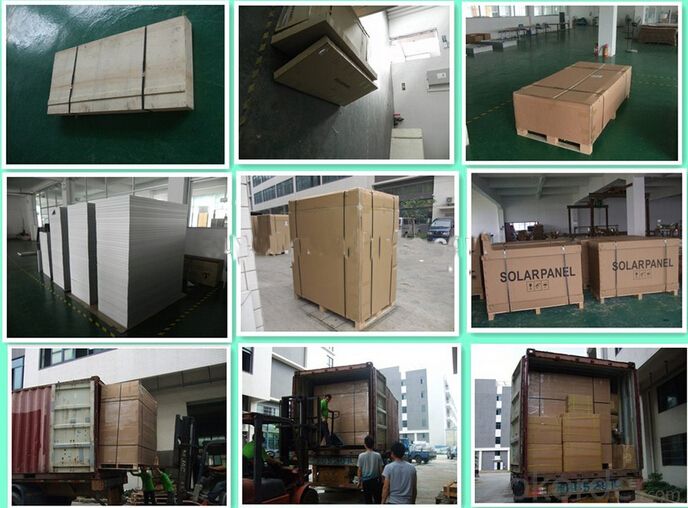
5. FAQ:
We have organized several common questions for our clients,may help you sincerely:
1). What’s price per watt?
A: It’s depends on the quantity, delivery date and payment terms of the order. We can talk further about the detail price issue. Our products is high quality with lower price level.
2). Can you tell me the parameter of your solar panels?
We have different series of cells with different power output, both from c-si to a-si. Please take our specification sheet for your reference.
3). How do you pack your products?
We have rich experience on how to pack the panels to make sure the safety on shipment when it arrives at the destination.
4).Can you do OEM for us?
Yes, we can.
- Q: Can solar panels be installed on refugee camps?
- Yes, solar panels can be installed on refugee camps. In fact, solar energy is often a viable and sustainable solution for providing electricity in these camps. Solar panels can be easily installed on rooftops or in open spaces, helping to meet the energy needs of refugees and improve their living conditions. Solar power can provide lighting, power for charging electronic devices, and even help run water pumps or refrigeration units. Its renewable nature and independence from the grid make it an ideal energy source for refugee camps, where access to reliable electricity is often limited.
- Q: Can solar panels be installed on a parking lot or carport?
- Yes, solar panels can be installed on a parking lot or carport. In fact, this is a growing trend known as solar carports or solar parking lot canopies. These structures not only provide shade for vehicles but also generate clean and renewable energy. They are a great way to utilize unused space for solar power generation while providing additional benefits such as reducing heat island effect and offering covered parking.
- Q: Ok so i have to solar panels to charge a battery however the panels hooked up in series does charge the battery very slowly because series connections only multiplies the voltage but leaves the current the same. Is there a way i can also hook both of them up in parallel at the same time to multiply the current for faster charge? I know i can do this with 4 panels but i dont want to spend extra. So is there a way to hook up 2 solar panels in series and parallel at the same time? Thanks in advace
- No. Series means one thing, parallel another, and they are mutually exclusive.
- Q: What, if any, improvement in efficiency per square foot or meter is realized by a solar panel in space vs. being mounted on the ground where the light is attenuated by the atmosphere?In passing, I found a site that gives an output of .89 watts / 4 in. sq for a particular home-mounted panel.
- Solar panels on spacecraft are a lot more efficient than ones made for home use. That doesn't include the effect of the atmosphere.
- Q: how much do solar panels cost?
- The silicon ones(last 5 to 25 years) run about $4-$5 a watt the amorphous (thin film) a little less (may last 5-0 years). If you use megawatt hour (000 kilowatt hr) a month you will need at least 3000 watts minimum. Therefore if your electric is .0 per kilowatt hr( $00 per month) the payback is around 25 years once you add the batteries plus inverters(batteries $50-$00 each)(synchronous inverter $3000 to$20000)(ie $5.00/.0=50 months at optimum output).Figure (depending where you live) probably only 50% so break even is usualy about 20 yrs.Ie you pay 20 years electric bill and hope nothing breaks(insurance not included) then you can start saveing money.
- Q: For example, If I were powering my house with solar panels, would it be more efficient or effective, (or I guess would I get more energy) out of a day that measured 90 degrees Fahrenheit as opposed to a day that is 70 degrees Fahrenheit.
- Nope. Sunlight is.
- Q: Can solar panels be installed on museums or cultural centers?
- Yes, solar panels can be installed on museums or cultural centers. In fact, solar panels are a popular choice for these buildings as they not only provide a sustainable source of energy but also promote environmental consciousness and serve as an educational tool for visitors. Additionally, solar panels can help museums and cultural centers reduce their energy costs and contribute to a greener future.
- Q: Can solar panels be installed on a residential community?
- Yes, solar panels can be installed on a residential community. Many residential communities are adopting solar energy as a sustainable and cost-effective alternative to traditional electricity sources. Installing solar panels in residential communities can help reduce energy costs, decrease reliance on fossil fuels, and contribute to a cleaner and more sustainable environment.
- Q: Can solar panels be used in areas with limited access to electricity?
- Yes, solar panels can be used in areas with limited access to electricity. Solar panels can generate electricity from sunlight, allowing them to provide a reliable source of power in remote or off-grid locations. These areas can benefit greatly from solar energy as it is a sustainable and renewable resource that can help meet their energy needs.
Send your message to us
Bifacial Polycrystalline Solar Panel 25W Hot Selling High Efficiency
- Loading Port:
- China main port
- Payment Terms:
- TT OR LC
- Min Order Qty:
- 250 watt
- Supply Capability:
- 200000000 watt/month
OKorder Service Pledge
OKorder Financial Service
Similar products
Hot products
Hot Searches
Related keywords
